Description
Details
This is a UNIVERSAL PRODUCT and you must to evaluate if it is adaptable on yuor motorbike. You can send a question to us if you are some doubt.
For the most demanding motorcyclists, Brembo has two different types of brake fluid: Brembo DOT 4 Sport.EVO 500++, formulated for enthusiasts, and Brembo Racing LCF 600 PLUS, offering the best possible characteristics under stress for those who race on the track.
The main characteristic of a brake fluid is its extremely low compressibility coefficient and notable resistance to high temperatures (boiling point), preventing any great variation in its volume given the high working temperatures that it can reach during the braking phases.
These temperatures depend on the continuity and intensity of the braking action; in fact the liquid has a working temperature range from about -40C° to well over 200°C so the higher the boiling point, the better the characteristic of the liquid.
As a result of its characteristics, brake fluid easily absorbs moisture. This leads immediately to a reduction in its performance to the point where it becomes completely inefficient. Owing precisely to its hygroscopicity (i.e. the tendency to absorb moisture from the air), the brake fluid deteriorates over time and loses the above-mentioned characteristics, developing a tendency to produce water vapour bubbles as the temperature increases (the “Vapour Lock” effect, whereby vapour bubbles develop). This gradually lengthens the action of the brake lever once it has warmed up.
The chart shows the deterioration of the various brake fluids on the basis of the moisture absorbed. You can see that the deterioration of the brake fluid characteristics is immediate, even in the case of just a small percentage of water. It’s therefore a good idea to keep it under control, replacing it when necessary.
For this reason, the brake fluid must have certain specific characteristics:
° be as incompressible as possible
° have a high boiling point
° have low viscosity
° be chemically stable
° be chemically inert in relation to gaskets
Brembo DOT 4 Sport.EVO 500++
Brembo DOT 4 Sport.EVO 500++ possesses excellent chemical/physical characteristics that make it a very good alternative to the original. That’s why it’s the perfect choice for those with a sporty driving style on the road. Its first-rate characteristics mean it can be used for a considerable distance before having to be replaced (usually between 12000 and 24000km).
Brembo SPORT EVO 500++ is ideal for use in braking and clutch systems designed for NON-mineral based fluids. It’s purposely conceived to meet the expectations of those enthusiasts who demand a lot from their system. And it meets the requisites of U.S. specification FMV55 116 DOT 4.
Brembo SPORT EVO 500++ can be mixed with other DOT 3, DOT 4 and DOT 5.1 brake fluids, as long as they comply with the above specification. It mustn’t be used in systems designed for mineral fluids.
Brembo Racing LCF 600 PLUS
Brembo Racing LCF 600 PLUS brake fluid is specifically formulated to ensure the best possible performance: it’s used by the Top Teams of MotoGP and SBK. Without any type of exception, this is the best brake fluid available on the market. It has a low compressibility factor at high temperatures, and a high boiling point.
Given its notable hygroscopicity though, its lifespan is limited (it depends on many factors, but is generally between 2000 and 4000km). Brembo Racing LCF 600 PLUS goes beyond the requisites of U.S. specification FMVSS 116 DOT4.
It’s compatible with all the Brembo braking systems and can be mixed with other DOT3 and DOT4 racing fluids
(you are advised to fully drain all the old fluid from the system however). Brembo LCF 600 Plus must not be used in braking systems containing parts in magnesium.
Practical tips
Brembo recommends you change the brake fluid at least once a year.
If the brake liquid level isn’t right, contact your dealer.
Keep the motorbike perfectly upright when checking the fluid level.
Brake fluid is aggressive and can damage the paint and rubber or plastic parts. If it leaks onto these parts of the bike, rinse it off immediately with water.
If it comes into contact with your skin, wash the area with soap and water.
Reviews
Product Questions
No Questions







 For your moto
For your moto  Moto Parts
Moto Parts  Alu7075 accessories
Alu7075 accessories  Fairings & Carbon parts
Fairings & Carbon parts 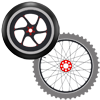 Wheels and tyres
Wheels and tyres 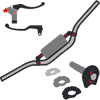 Controls and levers
Controls and levers  Windscreens & windshields
Windscreens & windshields  Brakes
Brakes  Garage & Track
Garage & Track  Electrical parts
Electrical parts  Engine parts
Engine parts  Frame parts
Frame parts  OFF-ROAD plastic kits
OFF-ROAD plastic kits  License plate holder
License plate holder  Protections
Protections  Exhausts
Exhausts 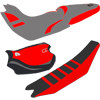 Seats & seat covers
Seats & seat covers  Shocks
Shocks  View mirrors
View mirrors 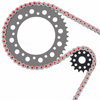 Trasmission
Trasmission  Products for all Moto
Products for all Moto  Off-Road accessories
Off-Road accessories  Race accessories
Race accessories  Touring accessories
Touring accessories  Accessories Handlebars
Accessories Handlebars  Accessories Electronics
Accessories Electronics  Accessories Brake M.C.
Accessories Brake M.C.  Action Camera
Action Camera  Stickers and Tank pads
Stickers and Tank pads  Anti-theft and Disc Lock
Anti-theft and Disc Lock  Tools and equipment
Tools and equipment  Batteries
Batteries  Chargers and accessories
Chargers and accessories  Chain
Chain  Stands & Ramps
Stands & Ramps  Quick throttle controls
Quick throttle controls  Indicators
Indicators  Lights & Universal light
Lights & Universal light  Grips
Grips  Handlebars
Handlebars  Merchandising & Gadgets
Merchandising & Gadgets  Oil for your bike
Oil for your bike  Brake calipers
Brake calipers  Universal plastics
Universal plastics  Tyres
Tyres  Clutch pump & control
Clutch pump & control  Front brake Master cylinder
Front brake Master cylinder  Rear brake Master cylinder
Rear brake Master cylinder  Clean and care
Clean and care  Spare parts carburetors
Spare parts carburetors  Spare parts
Spare parts  Spare parts for exhaust and silencers 2T
Spare parts for exhaust and silencers 2T  Suspension parts
Suspension parts  Exhaust SC-Project
Exhaust SC-Project  Racing bars
Racing bars  Mirrors
Mirrors  Electronic equipment
Electronic equipment  Tyre warmers
Tyre warmers  Transporting bikes
Transporting bikes  Bolts
Bolts  Gift card
Gift card 
 Oil
Oil  Motor oil 4T
Motor oil 4T  Motor oil 2T
Motor oil 2T  Chain lube
Chain lube  Fork oil
Fork oil  Brake fluid
Brake fluid  Air Filter oil
Air Filter oil  Coolants
Coolants  Sintoflon products
Sintoflon products  Lubrificant & Degreaser
Lubrificant & Degreaser  OFF ROAD gear
OFF ROAD gear  Helmets Off-Road
Helmets Off-Road  Trial Helmets
Trial Helmets  Junior Helmets
Junior Helmets  Off-Road Goggles
Off-Road Goggles 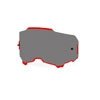 Lens and Accessories's Goggles
Lens and Accessories's Goggles  Gloves
Gloves  Jersey
Jersey  Pants
Pants  Junior Clothing
Junior Clothing  Boots
Boots  Junior Boots
Junior Boots  Socks
Socks  Chest Protector
Chest Protector  Knee guards
Knee guards  Neck protections
Neck protections  Elbow & shoulders protections
Elbow & shoulders protections  Back protectors
Back protectors  Junior protections
Junior protections  Technical Clothing
Technical Clothing  Jackets
Jackets  Rainproof
Rainproof  Clothing cleaners and detergents
Clothing cleaners and detergents 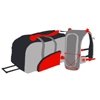 Bag and Backpack
Bag and Backpack  Waist packs
Waist packs  Camelbak Hydration Packs
Camelbak Hydration Packs  ROAD gear
ROAD gear  Helmets full face
Helmets full face  Helmets touring and modular
Helmets touring and modular  Helmets jet and demi-jet
Helmets jet and demi-jet  Junior Helmets
Junior Helmets  Road gloves
Road gloves  Women' s road gloves
Women' s road gloves  Racing Boots
Racing Boots  Touring Boots
Touring Boots  Women's boots
Women's boots  Shoes
Shoes 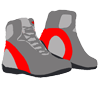 Women's shoes
Women's shoes  Road jackets
Road jackets  Road pants
Road pants  Technical Clothing
Technical Clothing  Back protectors
Back protectors  Knee sliders
Knee sliders  Rainproof
Rainproof  Casual Clothes
Casual Clothes  Helmet Garmet bags
Helmet Garmet bags  Clothing cleaners and detergents
Clothing cleaners and detergents  Shoes motorcycle
Shoes motorcycle  Bike
Bike  Bike Helmets & Clothing
Bike Helmets & Clothing  Bike Accessories
Bike Accessories  Tools & Maintenance Bike
Tools & Maintenance Bike  Parts & Components Bike
Parts & Components Bike  Gift Card
Gift Card 




































